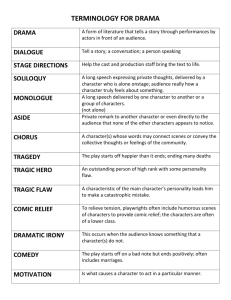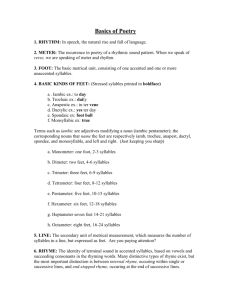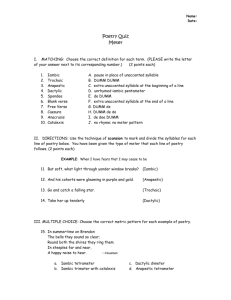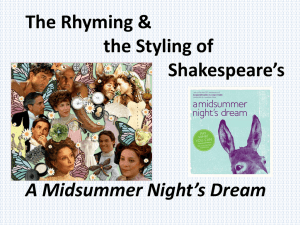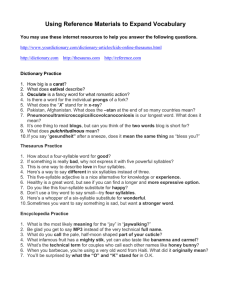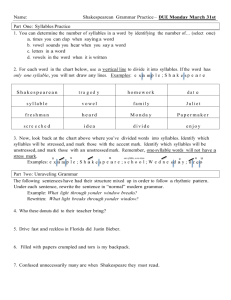IAMBIC
advertisement
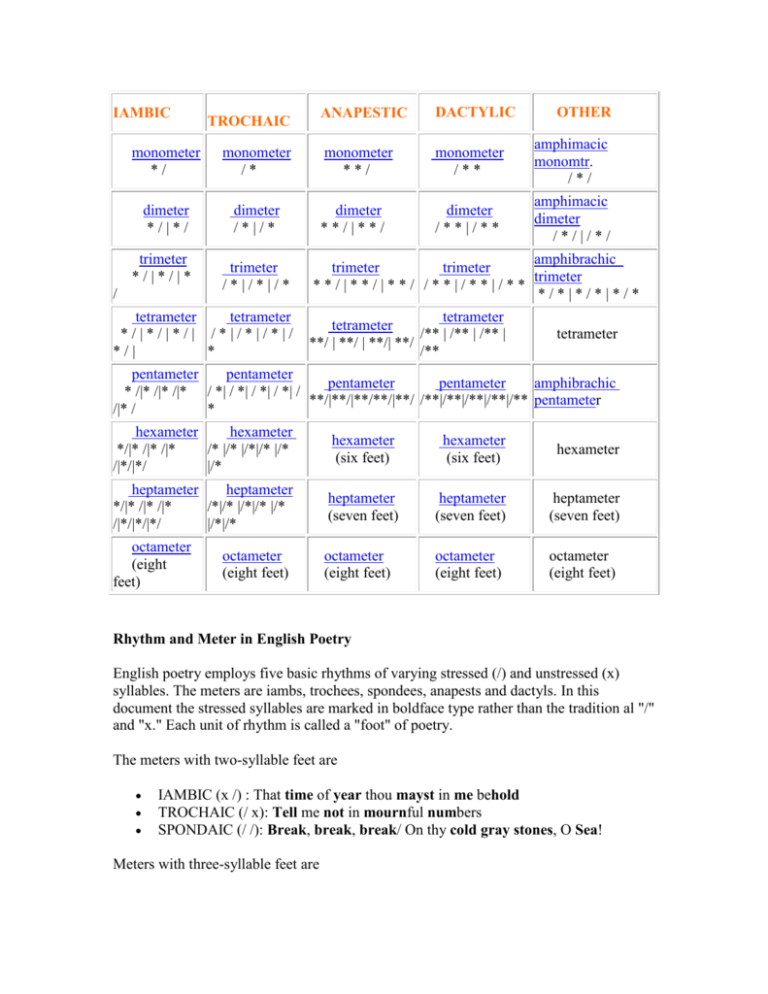
IAMBIC TROCHAIC monometer */ monometer /* dimeter */|*/ dimeter /*|/* trimeter */|*/|* / trimeter /*|/*|/* tetrameter tetrameter */|*/|*/| /*|/*|/*|/ */| * ANAPESTIC DACTYLIC OTHER monometer **/ monometer /** amphimacic monomtr. /*/ dimeter **/|**/ dimeter /**|/** amphimacic dimeter /*/|/*/ amphibrachic trimeter trimeter trimeter **/|**/|**/ /**|/**|/** */*|*/*|*/* tetrameter tetrameter /** | /** | /** | **/ | **/ | **/| **/ /** tetrameter pentameter pentameter pentameter pentameter amphibrachic * /|* /|* /|* / *| / *| / *| / *| / **/|**/|**/**/|**/ /**|/**|/**|/**|/** pentameter /|* / * hexameter hexameter */|* /|* /|* /* |/* |/*|/* |/* /|*/|*/ |/* hexameter (six feet) hexameter (six feet) hexameter heptameter heptameter */|* /|* /|* /*|/* |/*|/* |/* /|*/|*/|*/ |/*|/* heptameter (seven feet) heptameter (seven feet) heptameter (seven feet) octameter (eight feet) octameter (eight feet) octameter (eight feet) octameter (eight feet) octameter (eight feet) Rhythm and Meter in English Poetry English poetry employs five basic rhythms of varying stressed (/) and unstressed (x) syllables. The meters are iambs, trochees, spondees, anapests and dactyls. In this document the stressed syllables are marked in boldface type rather than the tradition al "/" and "x." Each unit of rhythm is called a "foot" of poetry. The meters with two-syllable feet are IAMBIC (x /) : That time of year thou mayst in me behold TROCHAIC (/ x): Tell me not in mournful numbers SPONDAIC (/ /): Break, break, break/ On thy cold gray stones, O Sea! Meters with three-syllable feet are ANAPESTIC (x x /): And the sound of a voice that is still DACTYLIC (/ x x): This is the forest primeval, the murmuring pines and the hemlock (a trochee replaces the final dactyl) Each line of a poem contains a certain number of feet of iambs, trochees, spondees, dactyls or anapests. A line of one foot is a monometer, 2 feet is a dimeter, and so on-trimeter (3), tetrameter (4), pentameter (5), hexameter (6), heptameter (7), and o ctameter (8). The number of syllables in a line varies therefore according to the meter. A good example of trochaic monometer, for example, is this poem entitled "Fleas": Adam Had'em. Here are some more serious examples of the various meters. iambic pentameter (5 iambs, 10 syllables) That time | of year | thou mayst | in me | behold trochaic tetrameter (4 trochees, 8 syllables) Tell me | not in | mournful | numbers anapestic trimeter (3 anapests, 9 syllables) And the sound | of a voice | that is still dactylic hexameter (6 dactyls, 17 syllables; a trochee replaces the last dactyl) This is the | forest pri | meval, the | murmuring | pine and the | hemlocks
